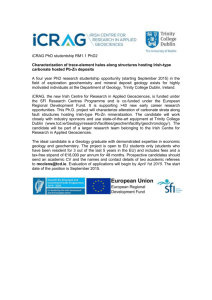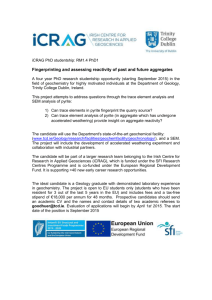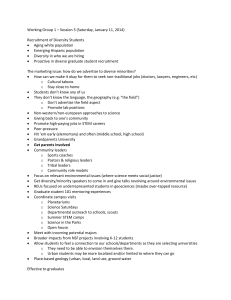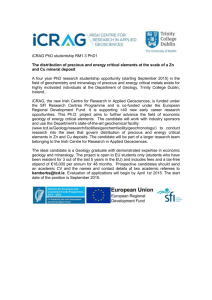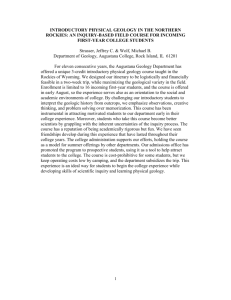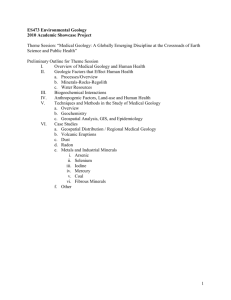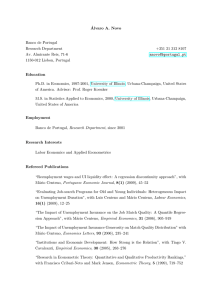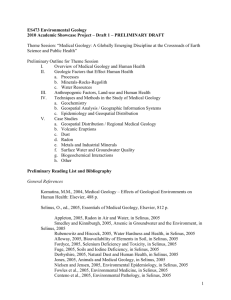1. Introduction to Medical Geology
advertisement
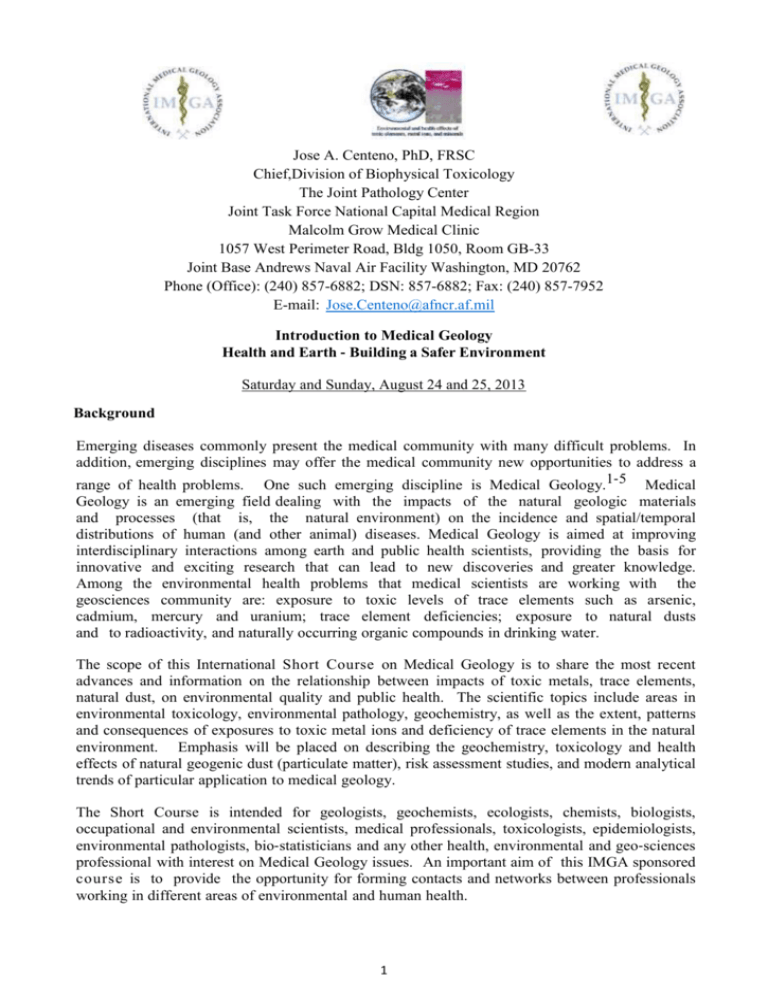
Jose A. Centeno, PhD, FRSC Chief,Division of Biophysical Toxicology The Joint Pathology Center Joint Task Force National Capital Medical Region Malcolm Grow Medical Clinic 1057 West Perimeter Road, Bldg 1050, Room GB-33 Joint Base Andrews Naval Air Facility Washington, MD 20762 Phone (Office): (240) 857-6882; DSN: 857-6882; Fax: (240) 857-7952 E-mail: Jose.Centeno@afncr.af.mil Introduction to Medical Geology Health and Earth ‐ Building a Safer Environment Saturday and Sunday, August 24 and 25, 2013 Background Emerging diseases commonly present the medical community with many difficult problems. In addition, emerging disciplines may offer the medical community new opportunities to address a range of health problems. One such emerging discipline is Medical Geology.1‐5 Medical Geology is an emerging field dealing with the impacts of the natural geologic materials and processes (that is, the natural environment) on the incidence and spatial/temporal distributions of human (and other animal) diseases. Medical Geology is aimed at improving interdisciplinary interactions among earth and public health scientists, providing the basis for innovative and exciting research that can lead to new discoveries and greater knowledge. Among the environmental health problems that medical scientists are working with the geosciences community are: exposure to toxic levels of trace elements such as arsenic, cadmium, mercury and uranium; trace element deficiencies; exposure to natural dusts and to radioactivity, and naturally occurring organic compounds in drinking water. The scope of this International Short Course on Medical Geology is to share the most recent advances and information on the relationship between impacts of toxic metals, trace elements, natural dust, on environmental quality and public health. The scientific topics include areas in environmental toxicology, environmental pathology, geochemistry, as well as the extent, patterns and consequences of exposures to toxic metal ions and deficiency of trace elements in the natural environment. Emphasis will be placed on describing the geochemistry, toxicology and health effects of natural geogenic dust (particulate matter), risk assessment studies, and modern analytical trends of particular application to medical geology. The Short Course is intended for geologists, geochemists, ecologists, chemists, biologists, occupational and environmental scientists, medical professionals, toxicologists, epidemiologists, environmental pathologists, bio‐statisticians and any other health, environmental and geo‐sciences professional with interest on Medical Geology issues. An important aim of this IMGA sponsored course is to provide the opportunity for forming contacts and networks between professionals working in different areas of environmental and human health. 1 Suggested Reading 1. Centeno JA. Natural disasters and their long‐term impacts on the health of communities. J Environ Monit 2008;10;266. 2. Centeno JA. Impacts of the natural environment on human health. Interciencia 2008;33(3)169‐171. 3. Bunnell JE, Finkelman RB, Centeno JA, Selinus O. Medical Geology – A Discipline Emerging Globally. Geological Acta 2007;5(3):273‐281. 4. Selinus O, Finkelman RB, Centeno JA. The Medical Geology Revolution. Geosciences 2007;5:108‐109. 5. Selinus O, Alloway B, Centeno JA. Essentials of Medical Geology – Impact of the Natural Environment on Human Health. Elsevier and Academic Press, 2005. 6. Cook AG, Weinstein P, Centeno JA. Health Effects of Dust – Role of Trace Elements and Compounds. Biol Trace Element Research 2005;103:1‐15. 2
